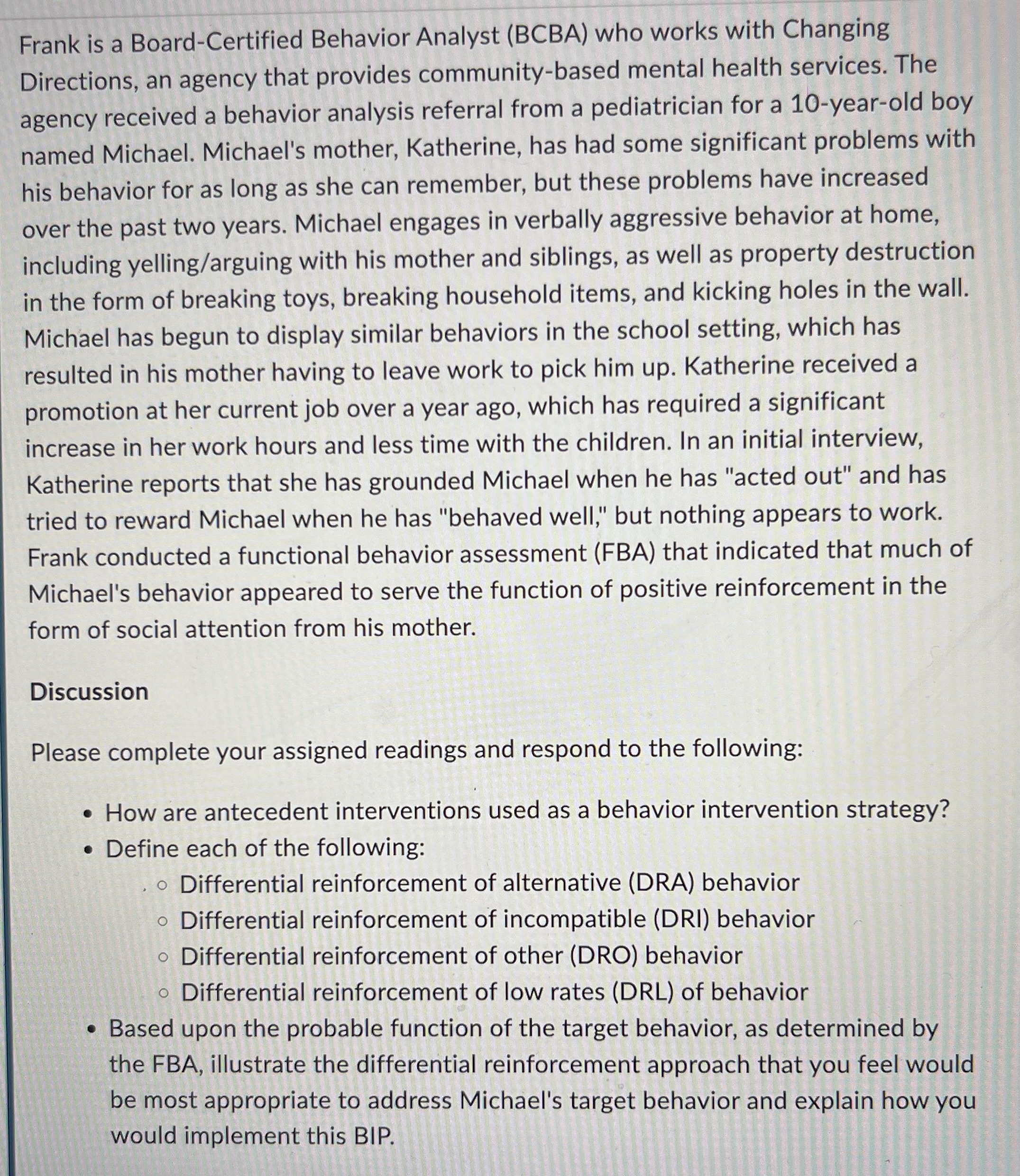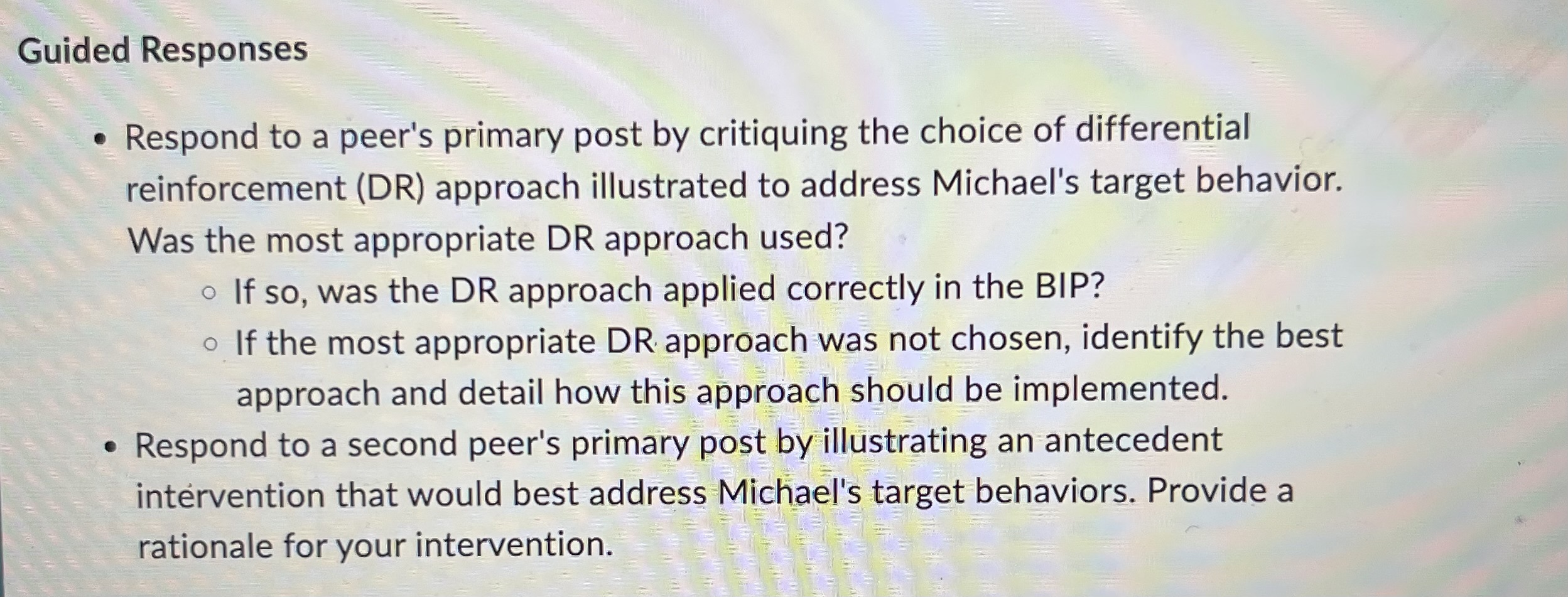Answered step by step
Verified Expert Solution
Question
1 Approved Answer
Frank is a Board-Certified Behavior Analyst (BCBA) who works with Changing Directions, an agency that provides community-based mental health services. The agency received a


Frank is a Board-Certified Behavior Analyst (BCBA) who works with Changing Directions, an agency that provides community-based mental health services. The agency received a behavior analysis referral from a pediatrician for a 10-year-old boy named Michael. Michael's mother, Katherine, has had some significant problems with his behavior for as long as she can remember, but these problems have increased over the past two years. Michael engages in verbally aggressive behavior at home, including yelling/arguing with his mother and siblings, as well as property destruction in the form of breaking toys, breaking household items, and kicking holes in the wall. Michael has begun to display similar behaviors in the school setting, which has resulted in his mother having to leave work to pick him up. Katherine received a promotion at her current job over a year ago, which has required a significant increase in her work hours and less time with the children. In an initial interview, Katherine reports that she has grounded Michael when he has "acted out" and has tried to reward Michael when he has "behaved well," but nothing appears to work. Frank conducted a functional behavior assessment (FBA) that indicated that much of Michael's behavior appeared to serve the function of positive reinforcement in the form of social attention from his mother. Discussion Please complete your assigned readings and respond to the following: How are antecedent interventions used as a behavior intervention strategy? Define each of the following: .. Differential reinforcement of alternative (DRA) behavior Differential reinforcement of incompatible (DRI) behavior Differential reinforcement of other (DRO) behavior Differential reinforcement of low rates (DRL) of behavior Based upon the probable function of the target behavior, as determined by the FBA, illustrate the differential reinforcement approach that you feel would be most appropriate to address Michael's target behavior and explain how you would implement this BIP. Guided Responses Respond to a peer's primary post by critiquing the choice of differential reinforcement (DR) approach illustrated to address Michael's target behavior. Was the most appropriate DR approach used? If so, was the DR approach applied correctly in the BIP? If the most appropriate DR approach was not chosen, identify the best approach and detail how this approach should be implemented. Respond to a second peer's primary post by illustrating an antecedent intervention that would best address Michael's target behaviors. Provide a rationale for your intervention.
Step by Step Solution
There are 3 Steps involved in it
Step: 1

Get Instant Access to Expert-Tailored Solutions
See step-by-step solutions with expert insights and AI powered tools for academic success
Step: 2

Step: 3

Ace Your Homework with AI
Get the answers you need in no time with our AI-driven, step-by-step assistance
Get Started


